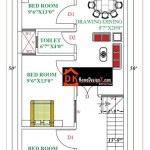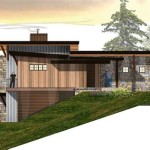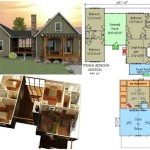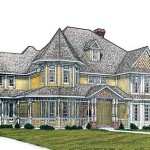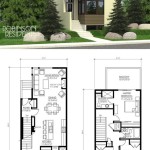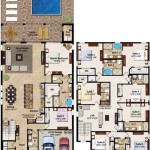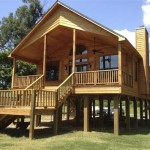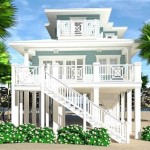Wren houses plans are detailed instructions that guide the construction of nesting boxes specifically designed for wrens, small songbirds known for their intricate songs and spirited nature. These plans typically outline the materials, dimensions, and construction steps necessary to create a suitable nesting environment for these birds.
By providing wrens with a dedicated nesting space, these houses contribute to the conservation of these charming creatures. In urban areas, where natural nesting sites are often scarce, wren houses offer a vital haven for breeding pairs. By studying these plans and following them meticulously, bird enthusiasts, homeowners, and nature lovers can actively support the survival and well-being of wrens in their local ecosystems.
In the following sections, we will delve into the essential components of a well-conceived wren house plan, exploring the materials, dimensions, and construction techniques that ensure a safe and comfortable nesting experience for these delightful birds.
When designing and constructing a wren house, it is essential to consider the following nine key points:
- Appropriate size
- Suitable entrance hole
- Adequate ventilation
- Proper drainage
- Durable materials
- Predator protection
- Easy access for cleaning
- Mounting considerations
- Aesthetic appeal
By carefully addressing each of these elements, you can create a wren house that will provide a safe, comfortable, and attractive nesting site for these charming birds.
Appropriate size
The size of the wren house is important for several reasons. First, it must be large enough to accommodate a pair of wrens and their nest, but not so large that it is difficult for the wrens to defend. Second, the size of the entrance hole must be appropriate for the size of the wrens. If the entrance hole is too large, predators may be able to enter the house and harm the wrens. If the entrance hole is too small, the wrens may not be able to enter the house.
- The overall size of the wren house should be approximately 6 inches wide, 6 inches deep, and 8 inches high. This size will provide enough space for a pair of wrens and their nest, but it will not be too large for the wrens to defend.
- The entrance hole should be approximately 1 1/4 inches in diameter. This size will allow the wrens to enter and exit the house easily, but it will be too small for most predators to enter.
- The floor of the house should be flat and level. This will help to prevent the eggs from rolling out of the nest.
- The roof of the house should be sloped to prevent water from pooling on top of the house.
By following these guidelines, you can ensure that your wren house is the right size for the wrens that will be using it.
Suitable entrance hole
The entrance hole of a wren house is one of the most important features. It must be the right size to allow the wrens to enter and exit the house easily, but it must also be small enough to prevent predators from entering. The ideal size for a wren house entrance hole is 1 1/4 inches in diameter.
The entrance hole should be placed near the top of the house, about 6 inches below the roof. This will help to prevent predators from reaching the nest. The entrance hole should also be facing away from the prevailing wind and rain.
In addition to the size and placement of the entrance hole, it is also important to consider the shape of the entrance hole. A round entrance hole is the most common, but a square or oval entrance hole can also be used. The shape of the entrance hole is not as important as the size and placement, but it is something to consider when designing your wren house.
By following these guidelines, you can ensure that the entrance hole of your wren house is suitable for the wrens that will be using it.
Adequate ventilation
Adequate ventilation is essential for a wren house. Without proper ventilation, the air inside the house can become stagnant and humid, which can lead to the growth of mold and mildew. Mold and mildew can cause respiratory problems for wrens, and they can also damage the eggs and nestlings.
- Ventilation holes should be placed near the top of the house, on opposite sides of the house. This will allow air to circulate through the house and help to prevent the buildup of moisture.
- The ventilation holes should be approximately 1/2 inch in diameter. This size will allow air to circulate without allowing predators to enter the house.
- The ventilation holes should be covered with wire mesh to prevent predators from entering the house. The wire mesh should be small enough to prevent predators from entering, but it should not be so small that it blocks the airflow.
- It is important to clean the ventilation holes regularly to prevent them from becoming clogged with dirt and debris.
By following these guidelines, you can ensure that your wren house has adequate ventilation.
Proper drainage
Proper drainage is essential for a wren house. Without proper drainage, water can accumulate in the house and cause the nest to become damp and moldy. This can lead to the death of the nestlings or the abandonment of the nest by the parents.
- The floor of the house should be sloped to one side to allow water to drain out of the house.
- The entrance hole should be placed near the top of the house to prevent water from entering the house.
- The roof of the house should be sloped to prevent water from pooling on top of the house.
- The house should be placed in a well-drained area.
By following these guidelines, you can ensure that your wren house has proper drainage.
Durable materials
The materials used to construct a wren house should be durable enough to withstand the elements and protect the wrens from predators. The following are some of the most durable materials that can be used to build a wren house:
- Cedar is a naturally rot-resistant wood that is ideal for building wren houses. It is also resistant to insects and decay, making it a durable choice for long-lasting use.
- Cypress is another rot-resistant wood that is suitable for building wren houses. It is also lightweight and easy to work with, making it a good choice for novice builders.
- Pine is a less expensive option than cedar or cypress, but it is not as durable. However, if it is treated with a water-resistant sealant, it can be a good choice for building a wren house.
- Plastic is a durable and weather-resistant material that can be used to build wren houses. It is also easy to clean and maintain, making it a good choice for busy homeowners.
When choosing materials for your wren house, it is important to consider the climate in your area. If you live in a cold climate, you will need to use a material that is resistant to rot and decay. If you live in a warm climate, you can use a less durable material, such as pine.
Predator protection
Wren houses should be designed with predator protection in mind. Predators such as snakes, cats, and squirrels can easily raid wren nests and kill the eggs or chicks. The following are some tips for protecting wrens from predators:
- Place the wren house in a location that is difficult for predators to reach. This could be on a high pole, in a dense bush, or on the side of a building.
- Make sure that the entrance hole is small enough to prevent predators from entering. The ideal size for a wren house entrance hole is 1 1/4 inches in diameter.
- Cover the entrance hole with a predator guard. A predator guard is a piece of metal or plastic that is placed over the entrance hole to prevent predators from entering. Predator guards can be purchased online or at hardware stores.
- Remove any perches or other structures that predators could use to climb to the entrance hole.
By following these tips, you can help to protect wrens from predators and ensure that they have a safe place to nest.
Easy access for cleaning
Wren houses should be designed with easy access for cleaning in mind. This is important because wren houses can become dirty and filled with debris over time. If the house is not cleaned regularly, it can become a health hazard for the wrens that nest in it.
- The house should have a removable roof or side panel. This will allow you to easily access the inside of the house to clean it.
- The floor of the house should be smooth and easy to clean. This will help to prevent dirt and debris from building up.
- The house should be placed in a location that is easy to reach. This will make it easier for you to clean the house on a regular basis.
- It is important to clean the house at least once a year, before the wrens start nesting. This will help to prevent the buildup of dirt and debris, and it will also help to prevent the spread of diseases.
By following these tips, you can ensure that your wren house is easy to clean and maintain. This will help to keep your wrens healthy and happy.
Mounting considerations
When mounting a wren house, it is important to consider the following factors:
- The height of the house. The house should be placed high enough off the ground to prevent predators from reaching it. However, it should not be placed so high that it is difficult for the wrens to enter and exit the house.
- The location of the house. The house should be placed in a location that is sheltered from the wind and rain. It should also be placed in a location that is close to a source of food and water.
- The type of mounting. The house can be mounted on a pole, a tree, or the side of a building. The type of mounting will depend on the location of the house and the materials that are available.
- The stability of the mounting. The house must be mounted securely to prevent it from falling or being blown over by the wind.
By following these guidelines, you can ensure that your wren house is mounted securely and safely.
Here are some additional tips for mounting a wren house:
- Use a predator guard. A predator guard is a piece of metal or plastic that is placed around the base of the pole or tree to prevent predators from climbing up to the house.
- Angle the entrance hole downward. This will help to prevent rain from entering the house.
- Provide a perch near the entrance hole. This will give the wrens a place to land before entering the house.
- Monitor the house regularly. Make sure that the house is still securely mounted and that there are no signs of damage.
By following these tips, you can help to ensure that your wrens have a safe and comfortable place to nest.
Aesthetic appeal
The aesthetic appeal of a wren house is an important consideration for many people. After all, you want your wren house to be a beautiful addition to your yard or garden. Here are a few tips for designing a wren house with aesthetic appeal:
Choose a design that complements your home and garden. There are many different styles of wren houses available, from traditional to contemporary. Choose a design that you like and that will look good in your yard or garden.
Use high-quality materials. The materials you use to build your wren house will affect its durability and appearance. Choose materials that are weather-resistant and that will look good for years to come.
Add personal touches. You can personalize your wren house by adding paint, stain, or other decorative elements. This is a great way to make your wren house unique and to show off your personality.
Consider the overall look of your yard or garden when choosing a wren house. You want the wren house to blend in with its surroundings and to look like it belongs. Avoid choosing a wren house that is too large or too small for your yard or garden.
By following these tips, you can design a wren house that is both beautiful and functional. Your wrens will love their new home, and you will enjoy watching them nest and raise their young.










Related Posts

